I love to travel to North Macedonia and as of mid-2023, I have now been three times! For the most recent trip, I took three friends along to discover this friendly and beautiful country. First, in May 2022, I spent most of my time in and around Skopje, the capital city. The beautiful Canyon Matka and Mount Vodno are just outside of the city, and can be reached by taxi or tour bus.
In October 2022, I spent a week working from home in Kavadarci, a city of about 40,000 in the Tikveš wine region. It was a friendly town and easily walkable. However, I was glad to have a car to explore the area. Outside of the town, you can visit vineyards, Lake Tikveš, Stobi archaeological ruins, and more.
At the end of the week, I drove to Bitola then back up to Skopje for a day. Bitola is a beautiful city with an old town, market, interesting architecture and a buzzing cafe scene.
Finally, in May 2023, we started in Ohrid near the beautiful lake. The old town and fortress on a hill are worth seeing. Then we spent a couple of days in the Kavadarci wine area, including a local boat trip to Saint George Monastery on Lake Tikvesh. Lastly, we stayed a day in Skopje, the capital. I can’t wait for the next time I travel to North Macedonia and I will take some more friends!

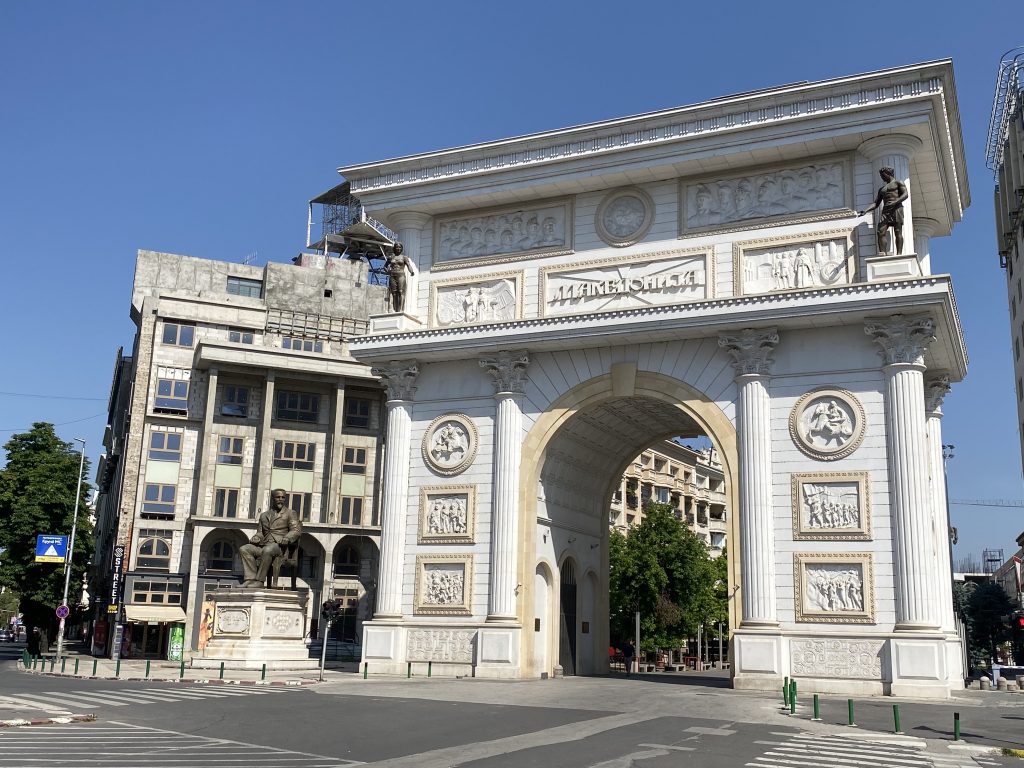

Highlights
- Skopje the Capital and surrounding area
- Skopje Fortress and Old City Walls
- Old City Bazaar and shops
- Walk around and appreciate all of the statues and bridges around the city. There are so many! It is just a shame many have been defaced with graffiti
- Museums and Galleries
- National Opera and Ballet
- Macedonian Philharmonic Hall
- Macedonia Square
- Macedonia Gate and Triumphal Arch
- Museum of Skopje City– the history of the building is very interesting, as it is the remains of the old rail station that mostly collapsed in the 1963 earthquake
- Memorial House of Mother Teresa, who was born in Skopje
- Bunjakovec Green Farmers’ Market
- Skopje Zoo and City Park
- Roman Aqueduct just north of the city- very well-preserved and in pretty surroundings
- Vodno Mountain, cable car and Millennium Cross
- Saint Panteleimon Monastery
- Canyon Matka- short trip outside of the city to see the gorge and caves
- From Skopje, it is relatively easy and affordable to hire a driver to visit neighbouring Kosovo
- Tikveš wine region
- Kavadarci– charming, medium-sized city
- Tikveš Lake
- Stobi archaeological site
- Local foods such as madjun (grape honey) and pisii, a type of fried bread
- Local museums in Kavadarci and neighbouring towns- interesting to learn about the culture and the staff are friendly
- Bitola
- Old town and market
- Pedestrian street Shirok Sokak
- Magnolia Square
- National Institute and Museum Bitola
- Heraclea Lyncestis ruins
- Lake Ohrid
- Old churches
- Try the fresh fish and Gjomleze, layered bread
Before you go
- Macedonia is now known as North Macedonia, though the people here still use “Macedonia” and “Macedonian” language and people. There is also a region in Greece called Macedonia
- No visa is needed for up to 90 days for UK and USA passport holders
- A lot of people smoke here and there are ashtrays on outdoor or semi-outdoor terrace tables at restaurants
- The local wines are amazing so be sure to try them, as they are not that easy to find outside of North Macedonia
- Many small places do not accept credit cards
- Tips are not expected but they are appreciated (around 10% or rounding up); it is best to have cash around for tips as you won’t be able to add a tip with credit card
- If there is more than one queue at the post office, look for the words Pratki Dergesa
- During the summer, bring sunscreen as the sun is strong. It’s also cheap to buy the local brand Blackup upon arrival
- Around water, there are mosquitos and midges so bring repellent
- Pharmacies are called apothecaries
- Summers are hot and the winters very cold. June was perfect but getting hot, and a bit humid. October was sunny and pleasant
- Macedonia’s second biggest export is wine (after tobacco), so try some of the local varieties while you are here including Vranec
- Most places have wifi but speed is variable
- Getting a sim card is very cheap and makes getting around and communicating easy
- Sometimes GoogleMaps has the location of places slightly wrong so have a look around and across the street
- Most people speak English. However, it is useful to have a translation app such as GoogleTranslate for when people do not understand you. It is also useful to read signs
- Some museums are closed on Sundays and/or Mondays so check opening hours
- Some public toilets, including museums, did not have toilet paper so carry your own
- It was safe to drink the tap water and eat salads. I did so and never got sick



Transport
- Flying from London Heathrow to Skopje involved a stopover in Zagreb, Croatia. Unfortunately I just missed my flight connection, so waited 8 hours in Zagreb airport. Then the flight was just over an hour to Skopje. However, an easier and direct option from London Luton is WizzAir in less than 3 hours.
- Skopje airport is small. Your hotel can pre-book for pick-up and that will be most convenient and safe. The taxi from the airport to the hotel was 1500 MKD (about 25 euros)
- To travel to Pristina, Kosovo, I booked a private taxi via a friend and was pleased with GTS (Global Transfer Services) contact +389 70 862 707
- For Vodno Mountain and Canyon Matka I booked a half day tour via Skopje Daily Tours and thought they were organised and fun
- For travel further out of the city, I recommend hiring a car such as at Sixt. It is affordable and there isn’t really another transport option.
- Walking around the cities like Skopje, Kavadarci and Ohrid is easy
Accommodation
- While in Skopje, I stayed at the Hotel Super 8, which is located very close to the Old City. I found it on Booking.com and it had overall good ratings. The building itself is a little older and some of the things in the room were broken, like the closet doors. However, it was clean and comfortable. The room was large and had a big desk, air conditioning and a mini refrigerator. The wi-fi was reliable and fast. Breakfast is included and includes a nice buffet with a mix of savoury and sweet foods. And all of the staff were friendly and helpful and I rate them a 10+! I enjoyed my stay very much and it was great value for money.
- In Kavadarci, I stayed at the Hotel Wine Cellar Popovi. It is very centrally located in the city. The rooms are comfortable and clean, and mine had a balcony to enjoy the morning sunshine. The home-cooked breakfasts are amazing, and there is a menu to choose from. Since I was staying for a few days I could try different options. Definitely try the local specialty picii (fried dough). And there is an added bonus that they are a small winery and have wines to taste!
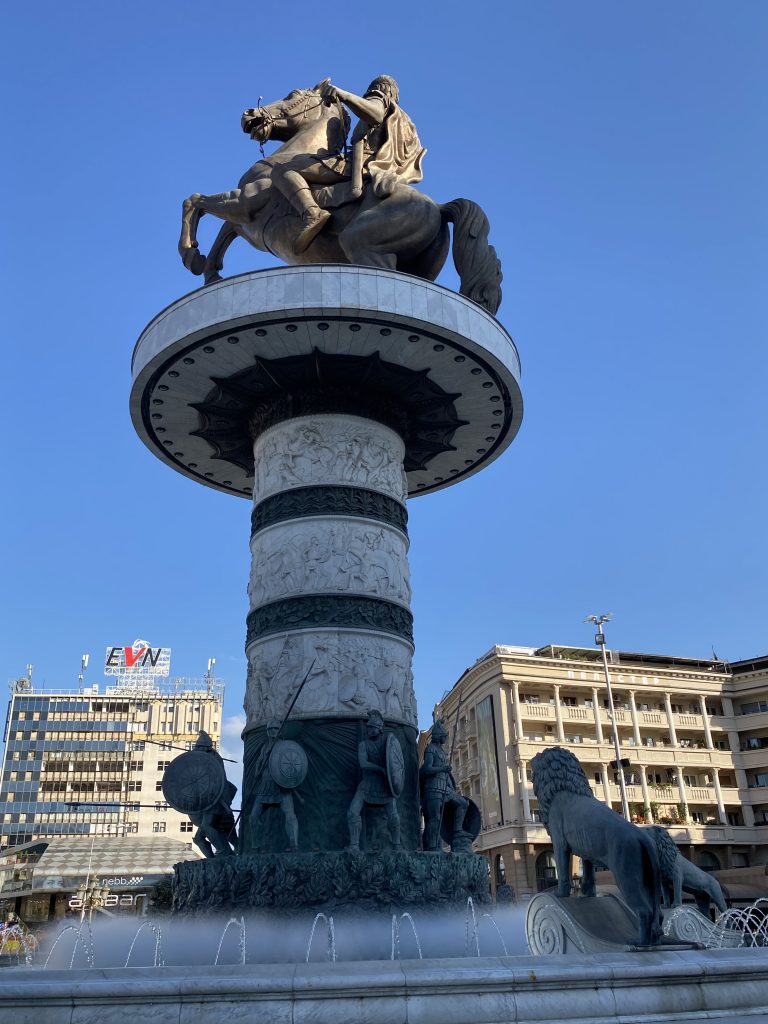


Currency
The official currency of North Macedonia is the Macedonian denar. As of October 2022, one British pound is 70.9 denars.
I recommend to check the currency conversion just before you leave as this fluctuates
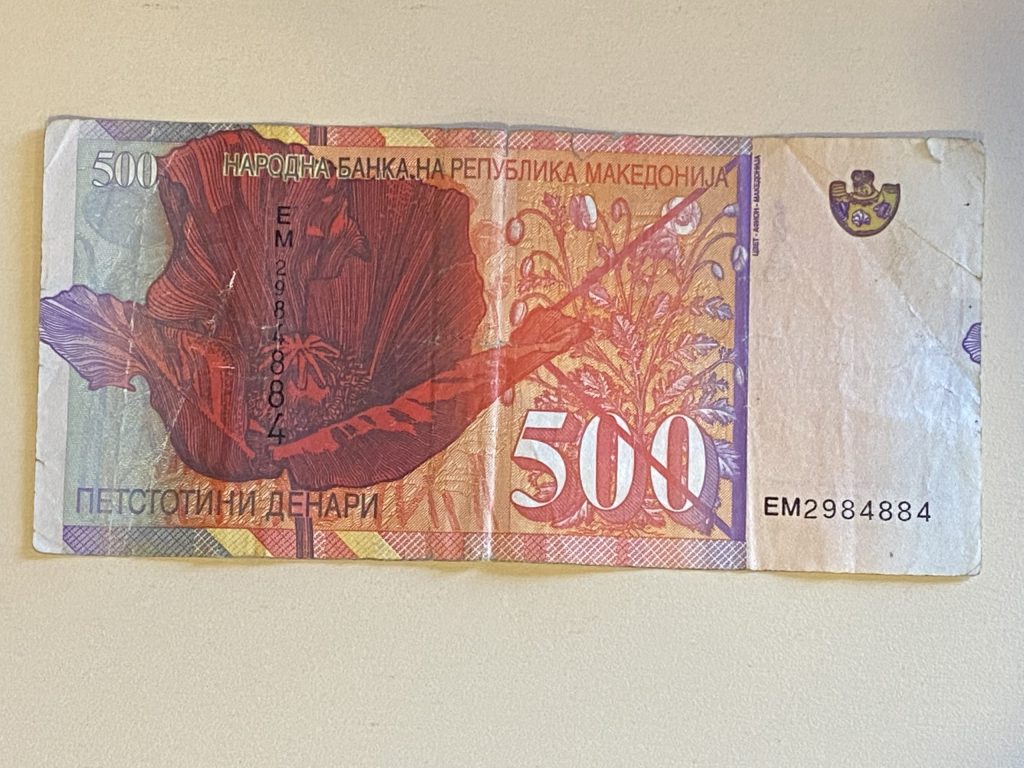
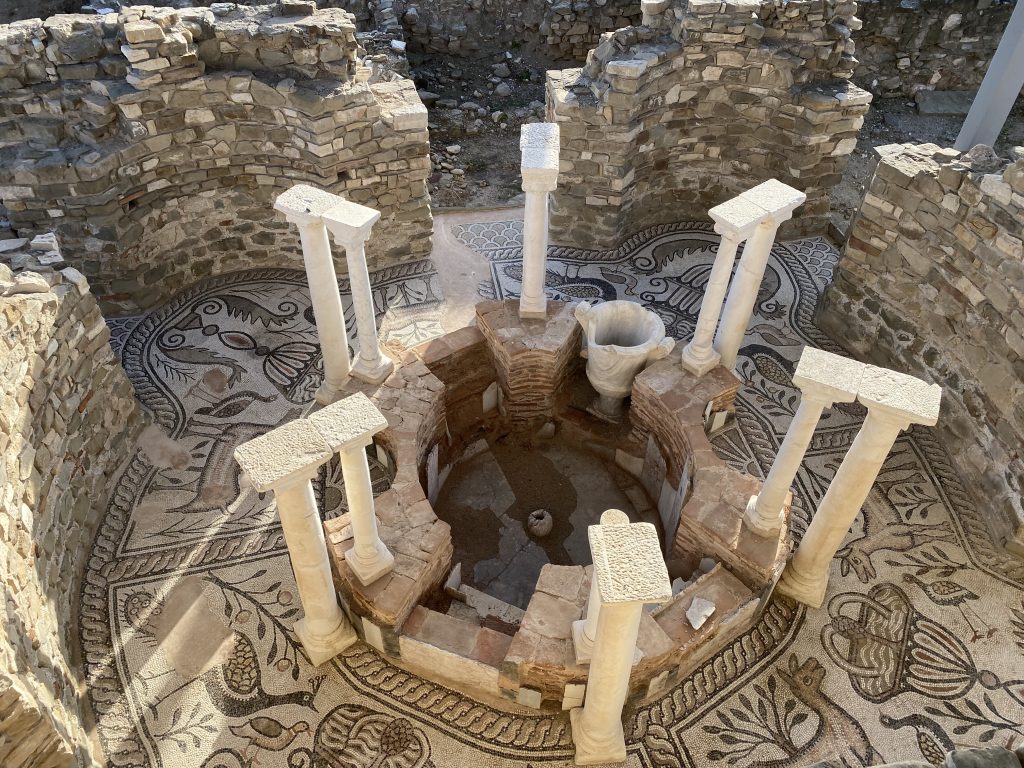






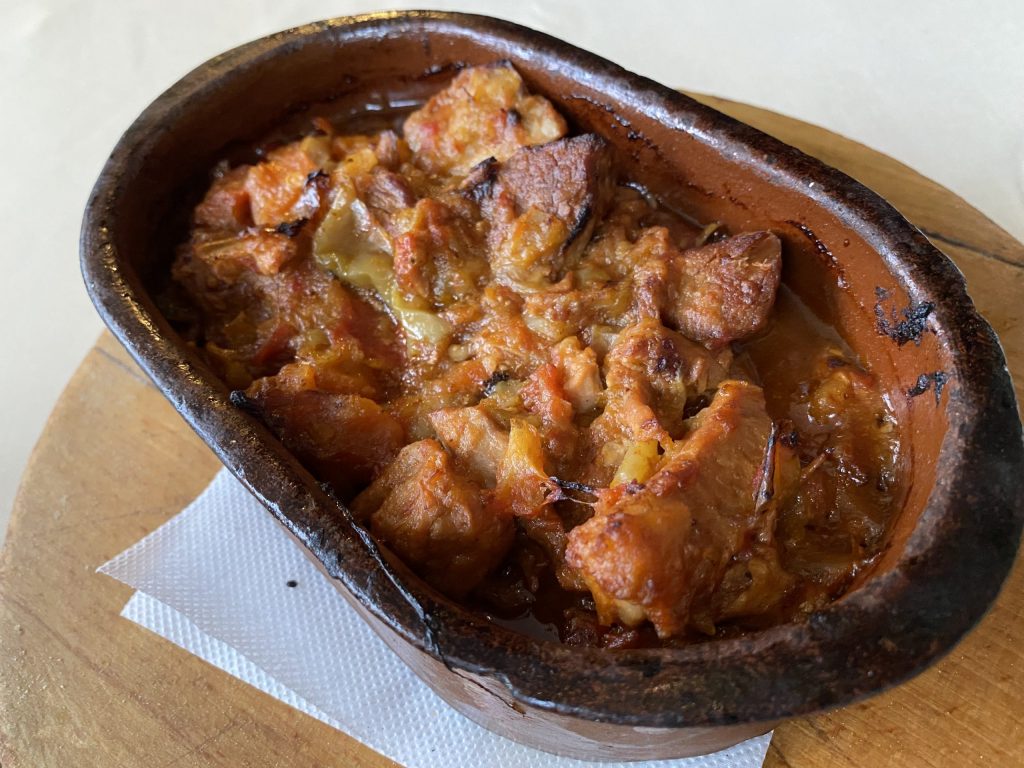

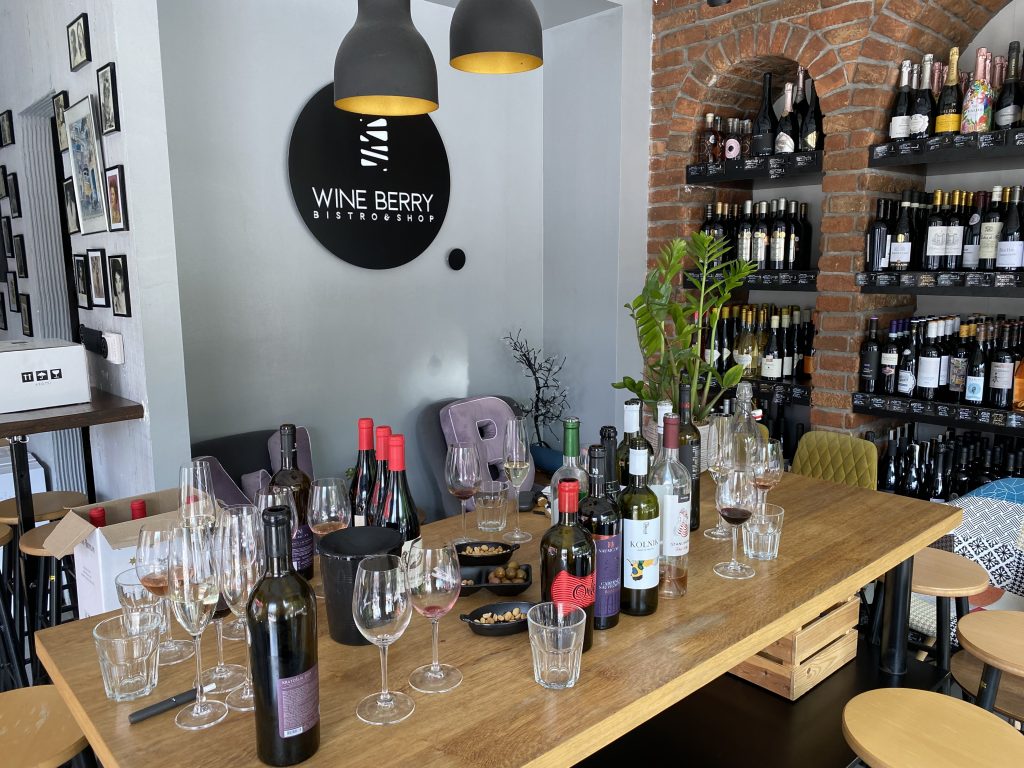





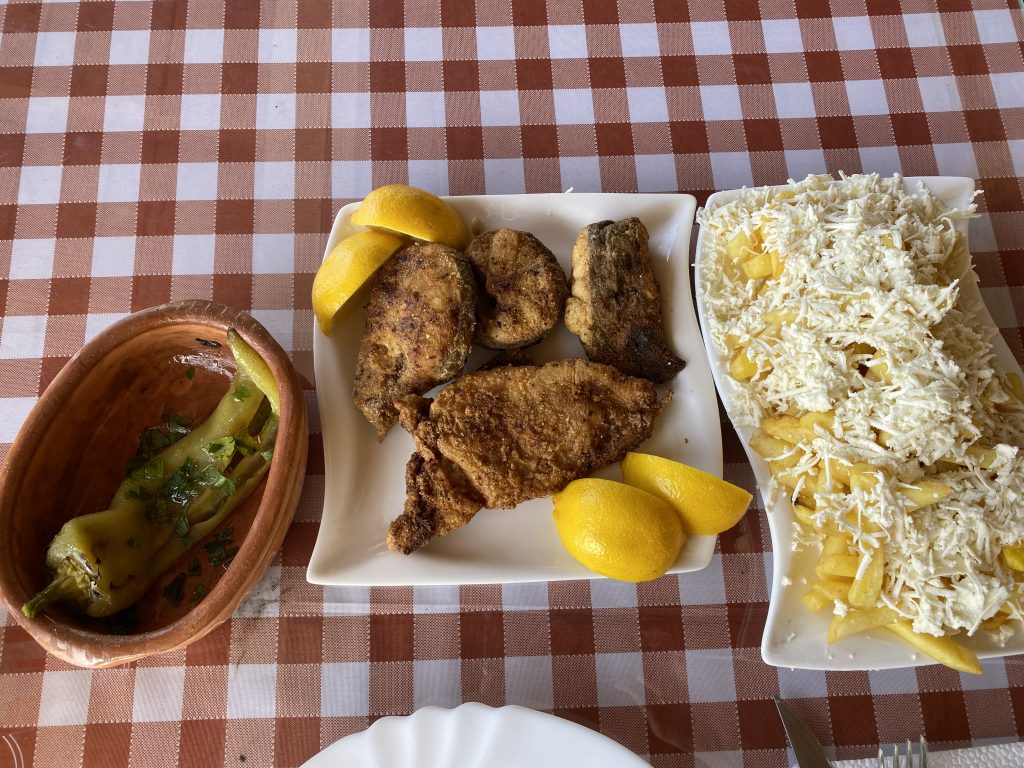
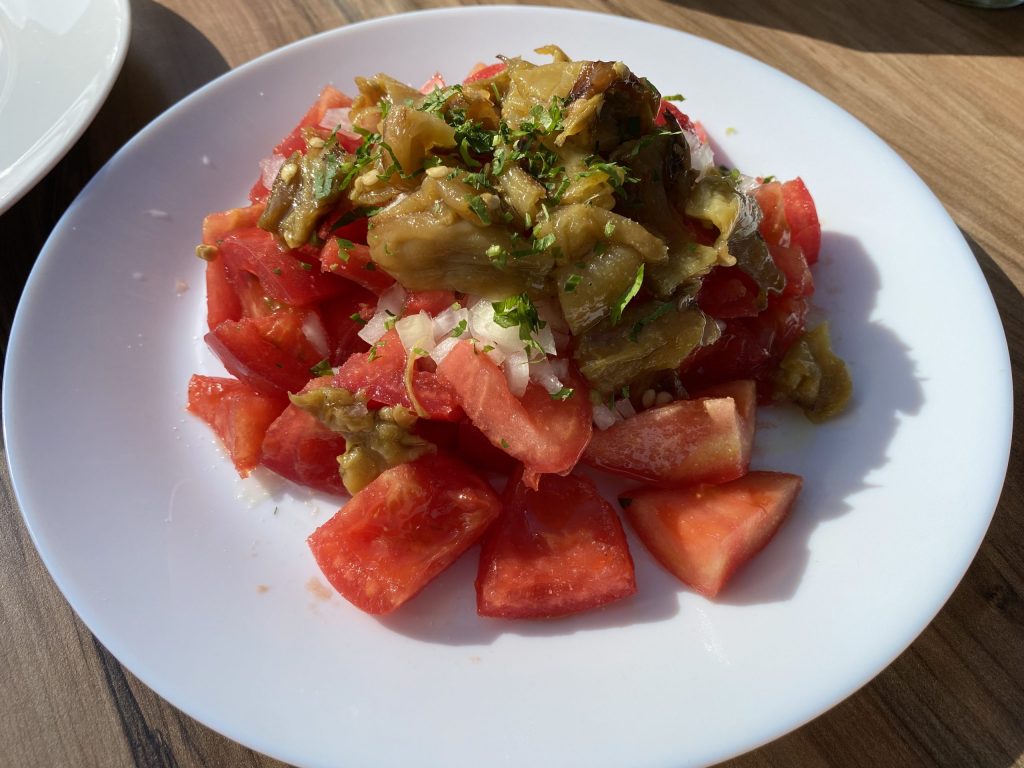




Food
First of all, let me say that I truly enjoyed the variety of food and wine that I tried in Macedonia. I was not sure what to expect based on the location. Although the traditional diet does contain a lot of meat, there are also a lot of salads, cheeses and amazing desserts. For either lunch or dinner each day, I tried to eat a lighter meal. Luckily the vegetables are very fresh and tasty!
On Sundays, many places are closed in North Macedonia due to a recent government law on Sunday openings. However, tourist places and some restaurants and cafes will be open.
The guide to Skopje has a list of recommended restaurants, bakeries and cafes. However, for this guide about travel to North Macedonia, I have focused on types of food and drinks. Also, when you are ordering and everything sounds delicious, just remember that portion sizes are usually quite large!
Starters
Pindjur is a very typical starter or side made of pureed tomato, pepper, aubergine and garlic. Usually it is eaten with bread. The vine leaves wrapped around meat and rice served with soured cream are another delicious starter. Sometimes there is a vegetarian version as well.
A piroshka is a long, fried, breaded roll filled with cheese and ham and served with pickle mayonnaise.
Main meals
The national dish is Tavche Gravche, a very delicious version of baked beans. These can be found at the more traditional restaurants which often have the word Gostilnica in the title.
Turli tava is a casserole with veal, chicken, onion, aubergines, carrots, green pepper and tomatoes. It was so tasty, straight out of the oven.
Macedonia is well-known for kevapi, also known as kebabs or kebaps. Don’t be alarmed that a serving portion can be 10 kebaps per person. In fact, they are small pieces of spiced minced meat rather than a big stick of meat like we may be used to in the UK or US. These are often served with fluffy bread and grilled vegetables.
For a healthier option, try the shopska salad with cucumber, tomato and shredded goat’s cheese. Similar to the shopska is the Macedonian salad which has cucumber, peppers tomato and onion. Usually the salad was served without dressing so I had to ask if I wanted oil and vinegar.
Drinks and snacks
Let’s start with the drinks! Macedonian Wine is underrecognized. In fact, it is also relatively difficult to find in the US and UK. Yes, I have looked! My favourite place to taste wines besides the wineries themselves was Wine Berry in Skopje, owned by a friend of a friend.
The reds are more famous than the whites. And personally, I prefer the reds. There are some typical varieties such as cabernet sauvignon and merlot. However, Vranec is very popular, and it is a more unusual grape for this area. I love its rich and fruity taste.
If you are less into wine than beer, then try the Macedonian beers. I found most of them to be drinkable and light. There’s also the rakija if you want to try the local (strong) liquor.
When I needed a fast and substantial lunch, I ordered the Macedonian burgers. The buns are larger than I am used to. And they are stuffed with a burger, fries and cucumber and/or tomato. Usually, they are also drizzled with ketchup and a flavoured mayonnaise sauce. It is very messy but also tasty. The burger is probably enough for two people!
The hot weather during the summer is perfect for ice cream. There are many options in Skopje, and it is difficult to say which is the best. In the smaller cities I didn’t find specific gelato shops, but there was plenty of ice cream for sale at supermarkets.
The bakeries also have a lot of tasty snacks so see below for some options.
Bakeries
Finally for my bakery experience. I love dessert, so I have tried a lot of cakes and sweets. In general, I found that the cakes here usually have a lot of cream or mousse. The baklava is a great mixture of crisp and syrupy. And the tulumba is a fried cylindrical dough soaked in sugar syrup.
On the savoury side my favourite was kuluri, a sesame bread ring similar to a bagel. In fact, they remind me of Jerusalem bagels. I am also a big fan of borek, a type of flaky pastry filled with either cheese, spinach, meat, fish or vegetables. Those are great as quick meals on the move.
One of the Ohrid specialties is a layered cake or bread called gjomleze. It takes hours to prepare as you bake each layer and keep adding on. Luckily I found it at the local green market in Ohrid, because the normal bakeries do not sell it.
Kavadarci specialties
Of course, Kavadarci is mainly known as the centre of the Tikves wine region. There are many choices of wines to try with some unusual grapes. Temjanika is a fragrant white wine that smells sweet, but is actually dry. Normally I don’t love white wine but I loved that! Stanushika is a native grape and the rose made from it is fruity and fresh.
Most of the vineyards also produce a strong alcohol called rakija. I tried it a couple of times, and it is tasty but very strong!
One of the first local foods I tried was pisii. It is a fried dough served for breakfast with madjun (grape molasses), tomatoes, cheese and olives. It was delicious! And I hope to recreate it at home soon.
The local lake Tikves has carp farms and also wild catfish, which are served at restaurants in the area.



FAQs
Q: Do I need a tour guide?
A: No, not in general to see Skopje city centre. However, to visit the rest of Macedonia you may need a tour guide, a taxi or a hired car to get around.
Q: Do people speak English?
A: Almost everyone spoke some English in Skopje. At times, I had my GoogleTranslate app ready to go but I didn’t need to use it very much. However, outside of the city fewer people speak English and a lot of signs are in Cyrillic. The camera function is helpful for instant translation. It is not perfect, but usually you can get the main idea.
Q: Can I travel solo?
A: Yes it is safe and easy to walk around on your own. As in any city, in Skopje be more careful at night and be aware of pickpockets. Kavadarci felt very safe as did Ohrid,
Q: How easy is it to send postcards?
A: Finding postcards was not so easy but getting stamps at the Macedonian post was easy. If there is more than one window look for the words Pratki Dergesa. I went to the incorrect queue first and that was for paying bills. See Sending Postcards from Abroad for details on cost and the time it took to reach the USA.
Go to Country Map



